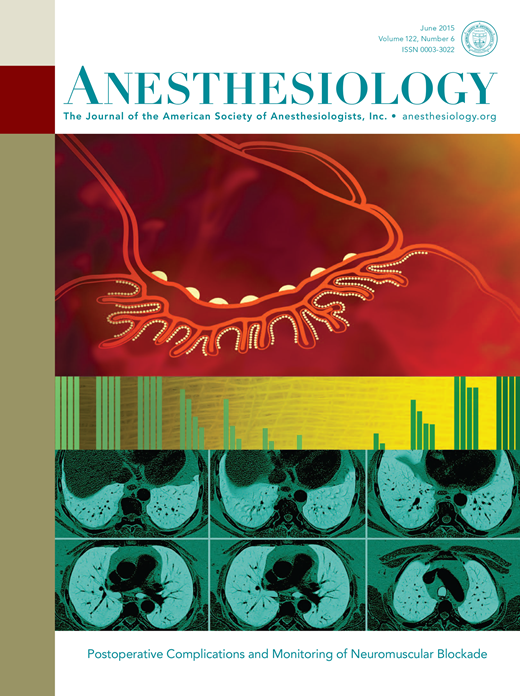Effects of increased cardiopulmonary bypass pump flow on renal filtration, perfusion, oxygenation and tubular injury in cardiac surgical patients - a randomized controlled trial.
IF 9.1
1区 医学
Q1 ANESTHESIOLOGY
引用次数: 0
Abstract
BACKGROUND Cardiac surgery with cardiopulmonary bypass (CPB) is associated with impaired renal oxygenation and acute kidney injury. We investigated whether a higher than our standard blood flow during CPB could improve renal blood flow, oxygen demand/supply relationship, function and attenuate tubular injury. METHODS After ethical approval and informed consent, 36 adult patients undergoing cardiac surgery received either high-flow (2.9 L/min/m2, n=19) or standard-flow (2.4 L/min/m2, n=17) during CPB in this randomized, non-blinded, parallell-arm study. Systemic hemodynamics and renal variables were measured before and during CPB. Glomerular filtration rate was measured by infusion clearance of iohexol and renal blood flow by infusion clearance of para-aminohippuric acid, corrected for renal extraction of para-aminohippuric acid, using a renal vein catheter. Renal oxygen demand/supply relationship was estimated from renal oxygen extraction and tubular injury assessed by urinary N-acetyl-β-D-glucosaminidase. RESULTS During CPB, high-flow lead to a larger increase in systemic oxygen delivery (100 ml/min/m2, 95% CI [60;141], vs 31[1.9;65], between group p<0.001, effect size Cohen´s dz 0.59) and target mean arterial pressure was maintained at a lower norepinephrine dose (0.03 µg/kg/min [-0.01;0.06] vs 0.10 [0.02;0.19], p=0.048, Cohen´s dz=0.62) compared with standard-flow. There were no differences in renal blood flow or oxygen extraction between groups. Glomerular filtration rate increased during high-flow CPB (6.4 ml/min/1.73m2 [1.9;10.9]), but not in the standard-flow group (-2.3 [-10.9;6.2], between group p=0.044, Cohen´s dz 0.66). The peak urinary excretion of N-acetyl-β-D-glucosaminidase was 1.42 units/µmol creatinine [0.87,3.6] vs 3.74 [1.5,7.7] in the high-flow and standard-flow groups, respectively (p=0.049). No perfusion-related adverse events were seen in either group. CONCLUSIONS A 20% higher than standard CPB flow during cardiac surgery improved renal function while no change in renal blood flow or oxygen demand/supply relationship could be detected. Higher CPB flow was associated with a less pronounced tubular injury marker release compared with standard flow.增加体外循环泵流量对心脏手术患者肾滤过、灌注、氧合和肾小管损伤的影响——一项随机对照试验。
背景:体外循环心脏手术(CPB)与肾氧合受损和急性肾损伤有关。我们研究了CPB过程中高于标准血流量是否能改善肾血流量、供氧关系、肾功能和减轻肾小管损伤。方法:在这项随机、非盲、平行对照研究中,36例接受心脏手术的成年患者在CPB期间接受高流量(2.9 L/min/m2, n=19)或标准流量(2.4 L/min/m2, n=17)。在CPB之前和过程中测量全身血流动力学和肾脏变量。通过输注碘己醇清除率测量肾小球滤过率,通过输注对氨基马尿酸清除率测量肾血流量,采用肾静脉导管校正对氨基马尿酸的肾提取。通过肾氧提取和尿n -乙酰-β- d -氨基葡萄糖酶评价肾小管损伤来估计肾氧需求/供应关系。结果CPB期间,高流量导致全身氧输送增加较多(100 ml/min/m2, 95% CI [60;141], vs . 31[1.9;65],组间p<0.001,效应大小Cohen ' s dz 0.59),与标准流量相比,低去甲肾上腺素剂量(0.03µg/kg/min [-0.01;0.06] vs . 0.10 [0.02;0.19], p=0.048, Cohen ' s dz=0.62)维持目标平均动脉压。两组间肾血流量和吸氧量无差异。高流量CPB组肾小球滤过率升高(6.4 ml/min/1.73m2[1.9;10.9]),而标准流量组肾小球滤过率升高(-2.3[-10.9;6.2],组间p=0.044, Cohen’s dz = 0.66)。高流量组和标准流量组n -乙酰-β- d-氨基葡萄糖苷酶尿排泄量峰值分别为1.42单位/µmol肌酐[0.87,3.6]和3.74单位/µmol肌酐[1.5,7.7](p=0.049)。两组均未见灌注相关不良事件。结论心脏手术时CPB流量比标准CPB流量高20%,可改善肾功能,但对肾血流量及需氧量/供氧量关系无明显影响。与标准流量相比,较高的CPB流量与较不明显的管状损伤标志物释放相关。
本文章由计算机程序翻译,如有差异,请以英文原文为准。
求助全文
约1分钟内获得全文
求助全文
来源期刊

Anesthesiology
医学-麻醉学
CiteScore
10.40
自引率
5.70%
发文量
542
审稿时长
3-6 weeks
期刊介绍:
With its establishment in 1940, Anesthesiology has emerged as a prominent leader in the field of anesthesiology, encompassing perioperative, critical care, and pain medicine. As the esteemed journal of the American Society of Anesthesiologists, Anesthesiology operates independently with full editorial freedom. Its distinguished Editorial Board, comprising renowned professionals from across the globe, drives the advancement of the specialty by presenting innovative research through immediate open access to select articles and granting free access to all published articles after a six-month period. Furthermore, Anesthesiology actively promotes groundbreaking studies through an influential press release program. The journal's unwavering commitment lies in the dissemination of exemplary work that enhances clinical practice and revolutionizes the practice of medicine within our discipline.
 求助内容:
求助内容: 应助结果提醒方式:
应助结果提醒方式:


